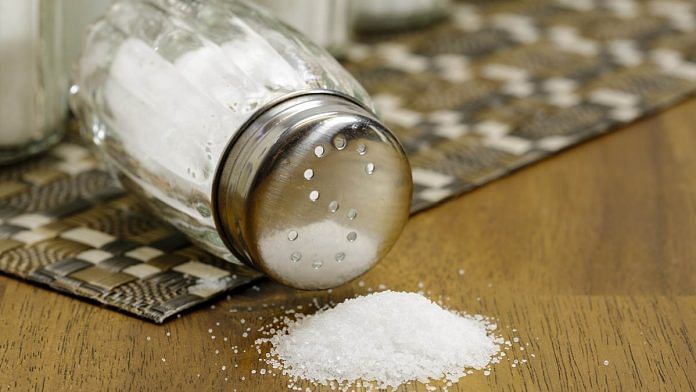Bengaluru: The World Health Organization (WHO) has issued new benchmarks for sodium consumption across countries, which are based on sources of sodium in local food environments and their steadily increasing salt content.
The recommended daily intake of salt or sodium by WHO is 5 gm, but most people around the world consume more than double this amount.
The new set of WHO Global Sodium Benchmarks target a range of categories of processed and packaged food that contribute to overly salty diets. These include processed and packaged bread, savoury snacks, meat products and cheese.
“Most people don’t know how much sodium they consume, or the risks it poses,” said Dr Tedros Adhanom Ghebreyesus, WHO’s Director-General, in an accompanying statement.
“We need countries to establish policies to reduce salt intake and provide people with the information they need to make the right food choices. We also need the food and beverage industry to cut sodium levels in processed foods. WHO’s new benchmarks give countries and industry a starting point to review and establish policies to transform the food environment and save lives,” he added.
With food reformulation — the process of re-designing an existing and often popular, processed food product with the primary objective of making it healthier — demonstrating that it is able to help lower sodium intake, the new benchmarks will help advance the WHO goal of 30 per cent reduction in global salt intake by 2025.
Also read: Does steaming help in Covid? The answer is yes, and no. Here’s why
Effects of sodium consumption
Salt is the primary source of sodium in our diets, and it is typically iodised. Sodium is necessary to maintain normal cell metabolism, a healthy plasma, and improves the health of the nervous system. It is found naturally in a range of foods like meat and dairy.
However, in processed foods, like processed meat, snacks, bread, or condiments, it is present in very high amounts.
Sodium and potassium are required to be in a dietary balance in our body and excess sodium consumption with insufficient potassium intake can lead to adverse health outcomes.
The recommended dietary intake of salt is 5 gm a day, which helps in reducing blood pressure and risk of cardiovascular disease. Excess salt intake can do the exact opposite and contribute to high blood pressure and increase the risk of heart disease and stroke.
According to WHO data, most people consume 9-12 gm of salt every day, on an average.
The international organisation also states that reducing salt intake has been identified as one of the most cost-effective measures countries can take to improve their population’s general health. It is estimated that 2.5 million deaths could be prevented globally if salt consumption is cut down to recommended levels.
Potassium, meanwhile, is found naturally in unrefined foods including fruits and vegetables. It is an essential nutrient that helps maintain body’s fluid volumes, electrolyte balance, and normal cell function.
Also read: India’s hypertension initiative substantially improved BP control in 4 states, study finds
Misconceptions about salt
In their fact sheet on salt reduction, the WHO also clarified some myths and misconceptions about salt reduction.
Some of these myths are that one needs to increase salt intake after sweating, sea salt or “natural” salts are better and that only old people needing to worry about salt.
These are all untrue because one needs only hydration after sweating, excess sodium is harmful regardless of the type of salt and eating too much salt can raise blood pressure at any age.
WHO’s guidelines to reduce salt intake, applies to all individuals except those who are deficient in sodium, lack build up of body water or require supervised nutrition or diets.
Also read: There’s no unique Andhra Covid strain which is 15 times more virulent, says CCMB chief



